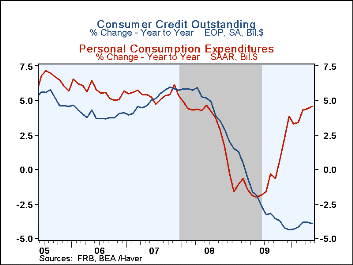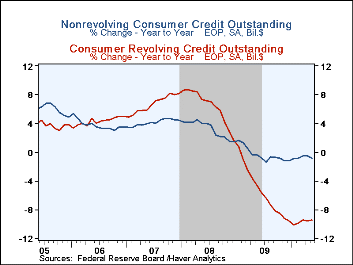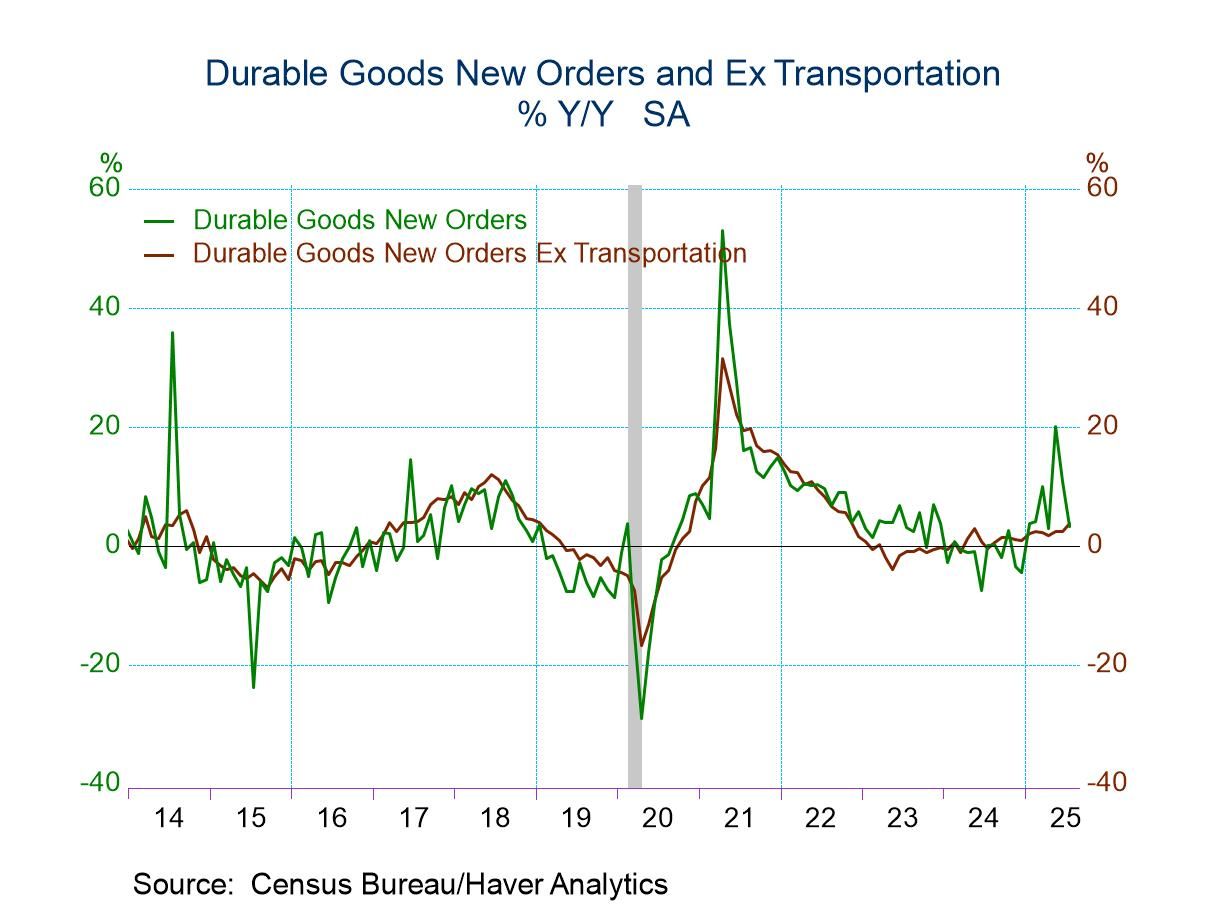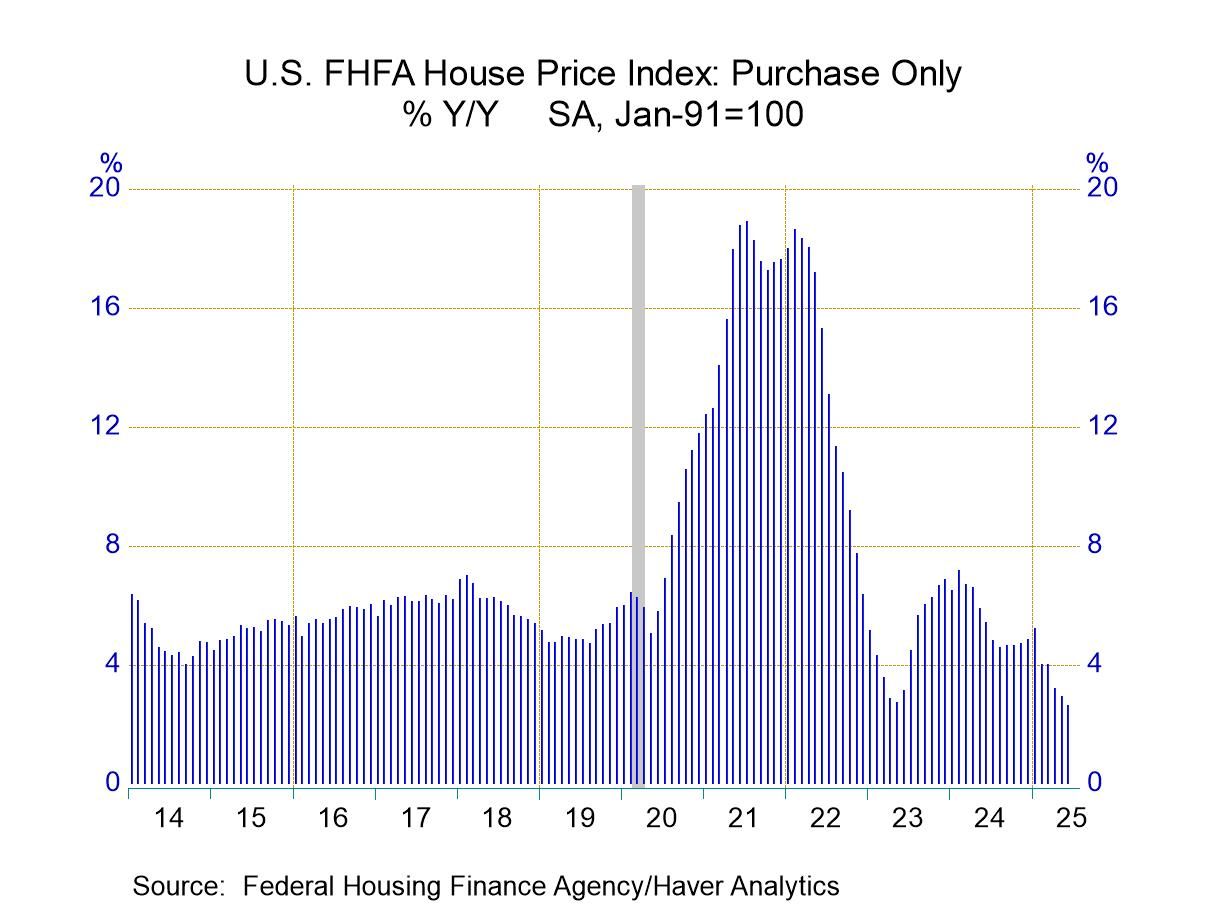 Global| Jul 08 2010
Global| Jul 08 2010U.S. Consumer Credit Contracts A Fourth Straight Month
by:Tom Moeller
|in:Economy in Brief
Summary
Consumers' deleveraging may be intensifying. Not only did consumer credit outstanding decline $9.1B during May, but the sharp $14.9B April drop was revised from a modest advance reported initially. Finally, May continued a string of [...]
Consumers' deleveraging may be intensifying. Not only did consumer credit outstanding decline $9.1B during May, but the sharp $14.9B April drop was revised from a modest advance reported initially. Finally, May continued a string of monthly declines since late-2008 and the 3.9% y/y drop in credit was near the series' record.
Leading the decline has been the cutback in revolving credit outstanding. As mentioned in our credit delinquency piece, consumers seem to be just cutting up their credit cards. The 9.4% y/y decline in credit outstanding was near the record for a series that never went negative before last year. Pools of securitized assets simply fell of a cliff during the last three months. Finance companies held lending constant (+29.4% y/y) though commercial bank lending slipped m/m after an earlier surge. Loans from credit unions were roughly stable (+4.8% y/y) as was lending by savings institutions.
Usage of non-revolving credit (autos & other consumer durables), which accounts for nearly two-thirds of the total, continued somewhat firmer though it fell during the last three months. May credit outstanding dropped $1.8B after a $6.5B April decline, revised from the $9.5B gain reported initially. Finance company lending fell $4.1B (-3.9% y/y) and credit union lending fell $5.9B (-5.9% y/y). Commercial bank lending slipped $1.5B (+5.5% y/y).
During the last ten years, there has been a 60% correlation between the y/y change in credit outstanding and the change in personal consumption expenditures. Moreover, these figures are the major input to the Fed's quarterly Flow of Funds accounts for the household sector.
Credit data are available in Haver's USECON database. The Flow of Funds data are in Haver's FFUNDS database
| Consumer Credit
Outstanding (m/m Chg, SAAR) |
May | April | March | Y/Y | 2009 | 2008 | 2007 |
|---|---|---|---|---|---|---|---|
| Total | $-9.1B | $-14.9B | $-5.1B | -3.9% | -4.4% | 1.5% | 5.7% |
| Revolving | -7.4 | -8.3 | -3.7 | -9.4 | -9.6 | 1.6 | 8.1 |
| Non-revolving | -1.8 | -6.5 | -1.7 | -0.8 | -1.3 | 1.5 | 4.4 |
Tom Moeller
AuthorMore in Author Profile »Prior to joining Haver Analytics in 2000, Mr. Moeller worked as the Economist at Chancellor Capital Management from 1985 to 1999. There, he developed comprehensive economic forecasts and interpreted economic data for equity and fixed income portfolio managers. Also at Chancellor, Mr. Moeller worked as an equity analyst and was responsible for researching and rating companies in the economically sensitive automobile and housing industries for investment in Chancellor’s equity portfolio. Prior to joining Chancellor, Mr. Moeller was an Economist at Citibank from 1979 to 1984. He also analyzed pricing behavior in the metals industry for the Council on Wage and Price Stability in Washington, D.C. In 1999, Mr. Moeller received the award for most accurate forecast from the Forecasters' Club of New York. From 1990 to 1992 he was President of the New York Association for Business Economists. Mr. Moeller earned an M.B.A. in Finance from Fordham University, where he graduated in 1987. He holds a Bachelor of Arts in Economics from George Washington University.








